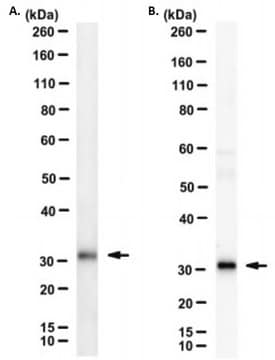J2000
Juvenile hormone III
≥65%, liquid, non-sterile
Sinônimo(s):
Methyl farnesoate, 10,11-epoxide, C16-Juvenile Hormone, JH-III, Manduca hormone, trans,trans-10,11-Epoxy-3,7,11-trimethyl-2,6-dodecadienic acid methyl ester
About This Item
Produtos recomendados
fonte biológica
synthetic (organic)
Nível de qualidade
esterilidade
non-sterile
forma
liquid
concentração
≥65%
técnica(s)
activity assay: suitable
Condições de expedição
ambient
temperatura de armazenamento
−20°C
cadeia de caracteres SMILES
COC(=O)\C=C(/C)CC\C=C(/C)CC[C@H]1OC1(C)C
InChI
1S/C16H26O3/c1-12(9-10-14-16(3,4)19-14)7-6-8-13(2)11-15(17)18-5/h7,11,14H,6,8-10H2,1-5H3/b12-7+,13-11+
chave InChI
QVJMXSGZTCGLHZ-ZPLWXOMKSA-N
Procurando produtos similares? Visita Guia de comparação de produtos
Categorias relacionadas
Descrição geral
Juvenile hormone III (JH III) is the most prevalent juvenile hormone (JH) found in insects.
Aplicação
- study the effect of juvenile hormone on mictic (sexual) female production of the rotifer Brachionus plicatilis Muller
- study the effect of juvenile hormone on head GB19811 (putative Takeout/juvenile hormone binding protein) mRNA levels in adult honeybees
- study the effect of juvenile hormone on gonadotropic and physiological functions in bumblebee Bombus terrestris
Ações bioquímicas/fisiológicas
inibidor
produto relacionado
Frases de perigo
Classificações de perigo
Aquatic Chronic 4
Código de classe de armazenamento
10 - Combustible liquids
Classe de risco de água (WGK)
WGK 3
Ponto de fulgor (°F)
Not applicable
Ponto de fulgor (°C)
Not applicable
Equipamento de proteção individual
Eyeshields, Gloves, multi-purpose combination respirator cartridge (US)
Certificados de análise (COA)
Busque Certificados de análise (COA) digitando o Número do Lote do produto. Os números de lote e remessa podem ser encontrados no rótulo de um produto após a palavra “Lot” ou “Batch”.
Já possui este produto?
Encontre a documentação dos produtos que você adquiriu recentemente na biblioteca de documentos.
Os clientes também visualizaram
Nossa equipe de cientistas tem experiência em todas as áreas de pesquisa, incluindo Life Sciences, ciência de materiais, síntese química, cromatografia, química analítica e muitas outras.
Entre em contato com a assistência técnica












